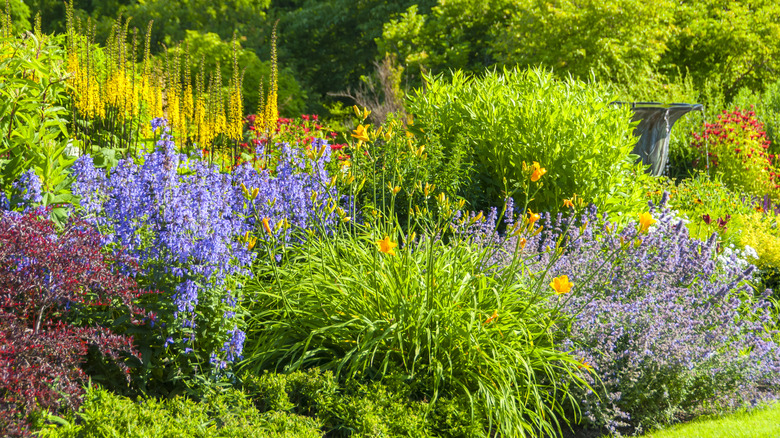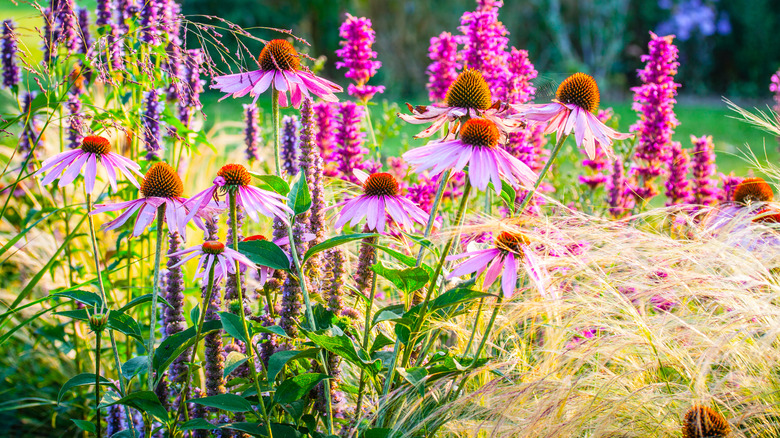The Purple Flower That's Actually An Invasive Weed (& Native Alternatives To Grow Instead)
Purple flowers can bring a pop of color to any garden, and it may be tempting to allow any purple flowering volunteer plants to take up residence. Unfortunately, if that purple flower is comfrey (Symphytum officinale), it's almost certainly best to remove it in many parts of the United States. That's because as pretty as comfrey's flowers may be, the plant is considered an invasive pest in many states on both the East and Pacific West coasts and can be challenging to control once it starts to spread. Fortunately, if you love the pop of purple that comfrey brings, there are many native purple flowers that will fit your garden perfectly, including purple coneflowers (Echinacea purpurea) and wood violets (Viola sororia).
Comfrey can be a wonderful plant in areas where it isn't invasive thanks to its ability to naturally fertilize trees due to its long taproot and ability to accumulate nutrients in its leaves. However, if you live in an area where it's more likely to be an invasive weed, native plants can come to the rescue for soil improvement, as well. Consider swapping the comfrey for a native nitrogen-fixing plant like wild lupine (Lupinus perennis), which not only improves your soil but also boasts violet blooms.
Native purple flowers
If you've been looking for a stunning purple flower to add to your garden, purple coneflowers are one of the best options around. Not only are these plants native to the central and eastern United States, but they're also drought-tolerant and deer-resistant. Hardy in zones 3 through 8, purple coneflowers thrive in full to part sun and can handle a range of soil conditions. Whether you opt for varieties that reach around 4 feet tall or choose a cultivar like 'Little Giant,' which doesn't grow much past 18 inches, the easy-to-care-for purple coneflower is a must-have for gardens.
However, for a more petite purple bloom to add to your garden, you may want to consider the dainty wood violet. This charming ground cover plant grows to only about 6 inches tall and can thrive in various light conditions, though it prefers dappled sun. Native to the eastern and central United States, the wood violet is able to handle a variety of soil types, from sandy to clay-heavy, and is hardy in zones 3 through 7.
If the thing you love most about comfrey isn't just its purple color but also its ability to improve soil, then wild lupine may be the perfect plant for you. Wild lupine is native to the eastern and central United States, and thanks to a symbiotic relationship with bacteria, it can make nitrogen usable for plants, improving soil health. Wild lupine thrives in zones 3 through 8 and can handle full sun or part shade. It grows best in loamy or sandy soil.

